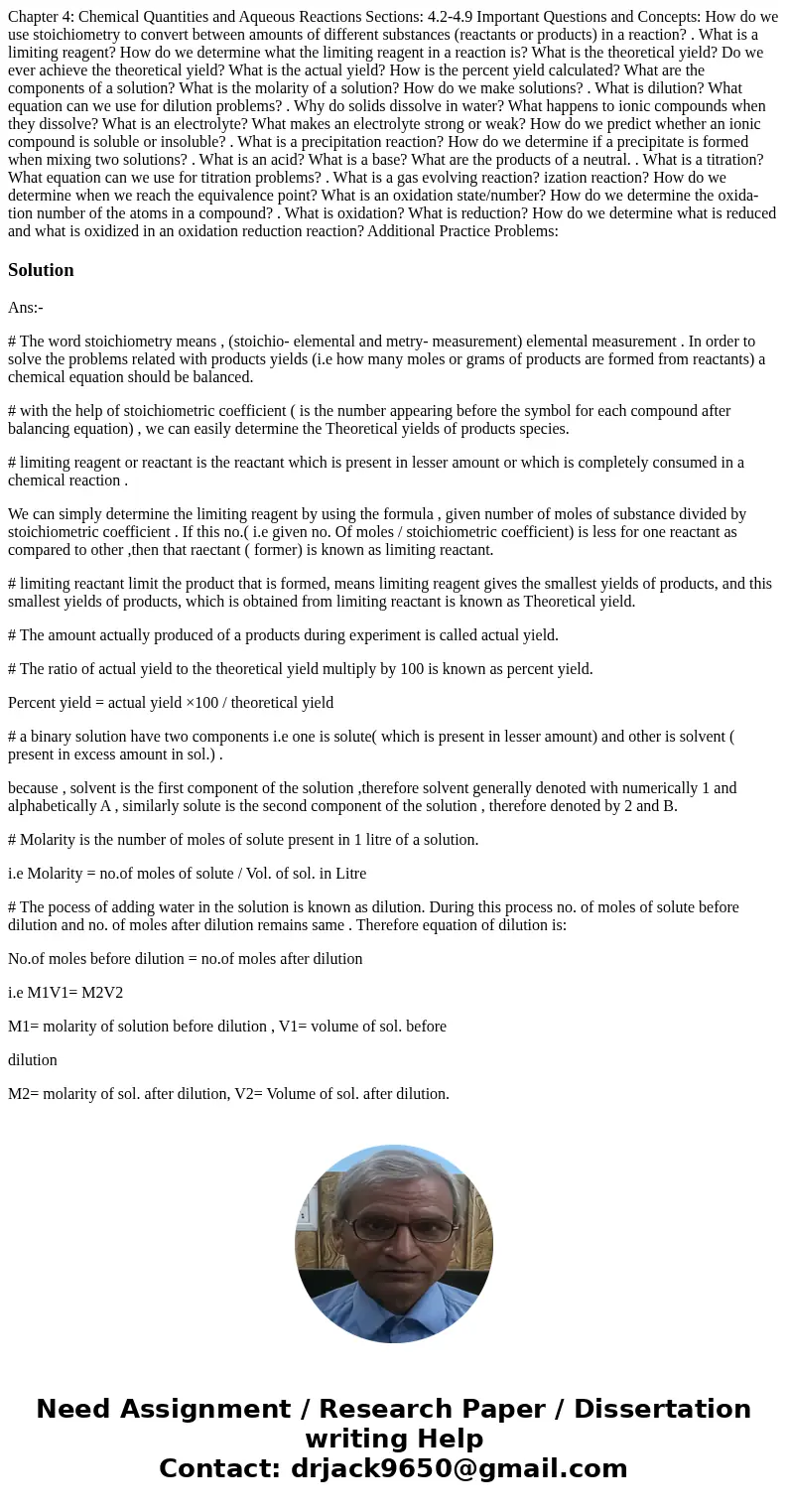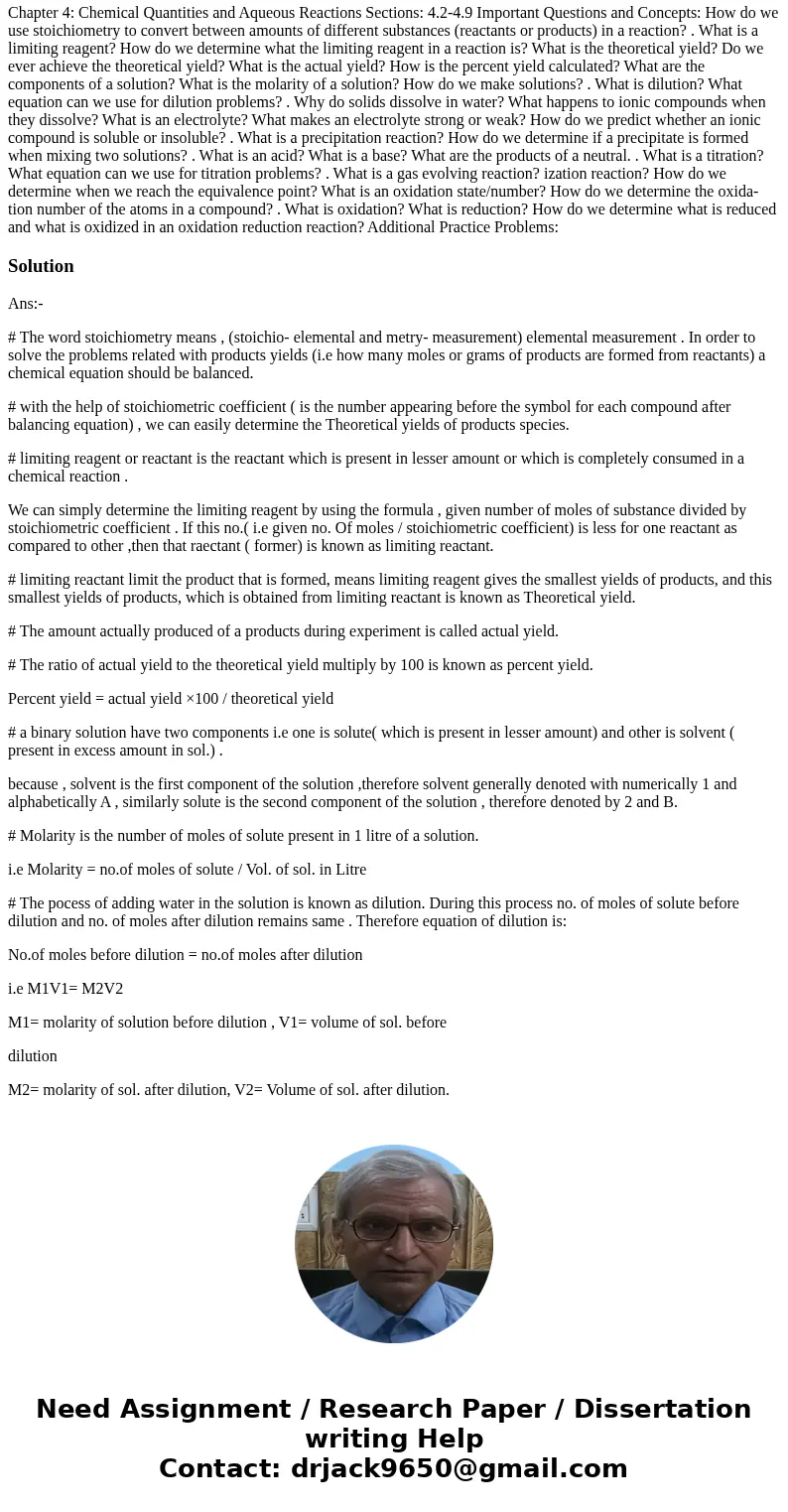Chapter 4 Chemical Quantities and Aqueous Reactions Sections
Solution
Ans:-
# The word stoichiometry means , (stoichio- elemental and metry- measurement) elemental measurement . In order to solve the problems related with products yields (i.e how many moles or grams of products are formed from reactants) a chemical equation should be balanced.
# with the help of stoichiometric coefficient ( is the number appearing before the symbol for each compound after balancing equation) , we can easily determine the Theoretical yields of products species.
# limiting reagent or reactant is the reactant which is present in lesser amount or which is completely consumed in a chemical reaction .
We can simply determine the limiting reagent by using the formula , given number of moles of substance divided by stoichiometric coefficient . If this no.( i.e given no. Of moles / stoichiometric coefficient) is less for one reactant as compared to other ,then that raectant ( former) is known as limiting reactant.
# limiting reactant limit the product that is formed, means limiting reagent gives the smallest yields of products, and this smallest yields of products, which is obtained from limiting reactant is known as Theoretical yield.
# The amount actually produced of a products during experiment is called actual yield.
# The ratio of actual yield to the theoretical yield multiply by 100 is known as percent yield.
Percent yield = actual yield ×100 / theoretical yield
# a binary solution have two components i.e one is solute( which is present in lesser amount) and other is solvent ( present in excess amount in sol.) .
because , solvent is the first component of the solution ,therefore solvent generally denoted with numerically 1 and alphabetically A , similarly solute is the second component of the solution , therefore denoted by 2 and B.
# Molarity is the number of moles of solute present in 1 litre of a solution.
i.e Molarity = no.of moles of solute / Vol. of sol. in Litre
# The pocess of adding water in the solution is known as dilution. During this process no. of moles of solute before dilution and no. of moles after dilution remains same . Therefore equation of dilution is:
No.of moles before dilution = no.of moles after dilution
i.e M1V1= M2V2
M1= molarity of solution before dilution , V1= volume of sol. before
dilution
M2= molarity of sol. after dilution, V2= Volume of sol. after dilution.


 Homework Sourse
Homework Sourse